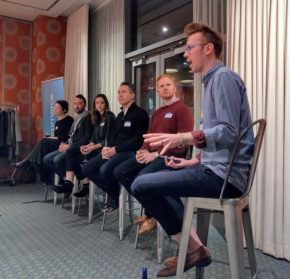
In today’s digital marketing landscape, accurate attribution is more than a nice-to-have—it’s essential for making informed business decisions. At StackCommerce, where we operate at the intersection of e-commerce, content, and affiliate marketing across our network of partners, attribution tracking has become increasingly complex with Google Analytics 4 (GA4), providing quite a few problems to solve.
If you’re seeing mismatches between your GA4 reports and your affiliate dashboards, you’re not alone. As engineers supporting StackCommerce, StackSocial, BrandCycle, and Reviewed.com, we’ve tackled these challenges head-on. Here, we share insights on navigating the ever-changing waters of performance tracking, particularly regarding Google Analytics 4 (GA4) and its relationship with affiliate marketing.
Why GA4 Often Misattributes Affiliate Conversions
One of the most common questions we receive from our merchant partners is about discrepancies between GA4 data and affiliate platform reports. There are several key reasons why these numbers rarely match:
GA4’s Attribution Model Doesn’t Always Line Up
By default, GA4 uses a last-click attribution model, which can clash with how many affiliate platforms operate. Most affiliate networks use first-click attribution or allow for custom attribution windows.
Cookie Durations Aren’t Always the Same
Affiliate platforms often credit conversions that happen 30, 60, or even 90 days after a click. GA4 typically has much shorter lookback windows.
Cross-Device Tracking Still Falls Short
Even though GA4 has come a long way from Universal Analytics, it still struggles to connect the dots across devices. If someone clicks an affiliate link on mobile but completes the purchase later on desktop, GA4 might fail to connect these events into a single user journey.
Sampling Can Skew the Numbers
For sites with a lot of traffic—like many in our publisher network—GA4 sometimes uses sample data to improve processing speed. This can lead to estimated metrics instead of exact numbers.
Third-Party Cookies Are Still a Problem
As more browsers limit third-party cookies, it’s becoming harder for GA4 to track users across domains. That’s a real issue for affiliate marketing, where link clicks often take users from one site to another.
Common GA4 Setup Mistakes for Affiliate Programs

Working with merchants has revealed some common configuration errors that can impact attribution.
One mistake we see often is improper event configuration, where brands don’t set up custom events to track affiliate link clicks. This oversight makes it really difficult to trace the customer journey from the very beginning.
Another frequent issue is missing cross-domain tracking. When a customer clicks an affiliate link and moves from the publisher’s site to the merchant’s site, the attribution chain can break if cross-domain tracking isn’t set up correctly.
We also see brands overlooking the need for separate data streams for their website and mobile apps, which can create a lot of confusion when it comes to reporting. Additionally, using the default channel groupings in GA4 can be problematic because these groupings often miscategorize affiliate traffic. Setting up custom channel definitions is important to get an accurate picture.
Lastly, with privacy changes making client-side tracking less reliable, ignoring server-side tracking options can leave major gaps in your data.
Privacy Changes and Their Impact on Tracking
Of course, even if you nail your GA4 setup, you’re not totally in the clear. Privacy updates are changing the game in a big way, having a major impact on how we track performance.
For starters, Apple’s Intelligent Tracking Prevention (ITP) in Safari now limits first-party cookies to just seven days and blocks most third-party cookies altogether. That’s a big blind spot for affiliate programs with longer attribution windows.
Then there’s App Tracking Transparency (ATT), which has made it much harder to track iOS users across apps and mobile web. Since users must actively opt in to being tracked, brands are seeing a steep drop in visibility here.
Even though Google’s phase-out of third-party cookies in Chrome has been pushed back (again), it’s still coming—and when it does, it’ll make cross-site tracking even more complicated.
Finally, GDPR, CCPA, and other global privacy regulations now require user consent for tracking, which means that a significant portion of users are no longer trackable through traditional methods.
At StackCommerce, we take data privacy extremely seriously. While these changes create challenges for attribution, they represent important consumer protections. Our approach has been to adapt our tracking methods while respecting user privacy choices.
Technical Solutions to Improve Tracking Accuracy
Based on our experience supporting multiple e-commerce platforms, we recommend the following technical fixes to improve GA4 attribution for affiliate programs.
First up: switching to server-side tracking with Google Tag Manager. It sidesteps a lot of the restrictions that come with client-side tracking and keeps things privacy-friendly—we’ve seen attribution accuracy jump by up to 25% with this adjustment. Plus, using GA4’s Measurement Protocol to send data straight from your servers is a great way to catch conversions that might slip through the cracks when client-side tracking fails.
Another smart move is to focus on getting users to log in by creating experiences that require authentication. This gives you way more reliable tracking across different devices and sessions. Also, consider using data clean rooms; they let you match up your first-party data with partner data without risking PII exposure.
Of course, don’t just stick with the default GA settings—configure GA4’s data-driven attribution model to better align with how your affiliate program actually works.
Best Practices for Comprehensive Customer Journey Tracking

Let’s get specific. In our work across the StackCommerce ecosystem, these are the best practices we’ve developed:
UTM Parameter Strategy
- Implementing a consistent UTM strategy across all affiliate partners with clear naming conventions.
- Building systems that automatically append correct UTM parameters to all affiliate links, preventing human error.
- Providing clear documentation to all partners explaining our UTM requirements and their purpose.
Server-Side Tracking
- Going hybrid and implementing both client- and server-side tracking to capture the fullest possible picture of user journeys.
- Leveraging Facebook CAPI, Google’s Enhanced Conversions, and similar tools to improve attribution accuracy through conversion APIs.
- Implementing server-side firing of affiliate network pixels on conversion to ensure credit is properly assigned.
Offline Conversion Tracking
- Maintaining user identifiers throughout the customer journey to connect online clicks with offline purchases.
- Setting up automated processes to import offline conversion data at least daily.
- Using a customer data platform (CDP)—we use Segment—to unify online and offline customer data.
Attribution’s Ongoing Challenges
Fixing attribution in GA4 is essential. The path to success requires a layered approach that combines technical setup, privacy-conscious tracking methods, and consistent processes. These solutions have helped us improve accuracy across our ecosystem, and we hope they’ll help you do the same.
That said, even the best GA4 setup has limits. In Part 2 of this series, we’ll dig into how we’ve gone beyond GA4 to build a future-proof attribution system using first-party data and alternative measurement frameworks. Stay tuned!
Looking for some more actionable advice? Reach out anytime!

